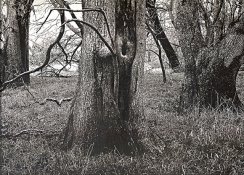phritz phantom
Member
- Joined
- Aug 20, 2006
- Messages
- 211
- Format
- Medium Format
honestly, i've been asking this myself for quite some time now. and reading all that talk on here about the low gradations and that the zone system is there to make negatives printable at grade 2.
i can't get a decent black at grade 1 or 2. i usually start at grade 3 and print at 4 most of the time, many times at 5.
i've done my fair share of zone system testing and while my negatives aren't perfect, i don't think they are that far off.
i get good shadow detail at low gradation, but it's all a mushy grey. looks awful to my eye. grade 4 looks way better, better separation, sharper and deep blacks.
i'd have to add, i like the prints of w. eugene smith a lot and think that's what a good print should look like. so i am a fan of contrasty images. but is this the answer? or is there something wrong with my process?
btw. does someone know at which grade w.e. smith printed his work? i tried to find out, but couldn't find any info on that.
according to his article in "darkroom" by lustrum press, he used polycontrast f paper (from kodak, i think). this seems to be variable contrast paper, so i doesn't say anything about the grade he printed at.
i can't get a decent black at grade 1 or 2. i usually start at grade 3 and print at 4 most of the time, many times at 5.
i've done my fair share of zone system testing and while my negatives aren't perfect, i don't think they are that far off.
i get good shadow detail at low gradation, but it's all a mushy grey. looks awful to my eye. grade 4 looks way better, better separation, sharper and deep blacks.
i'd have to add, i like the prints of w. eugene smith a lot and think that's what a good print should look like. so i am a fan of contrasty images. but is this the answer? or is there something wrong with my process?
btw. does someone know at which grade w.e. smith printed his work? i tried to find out, but couldn't find any info on that.
according to his article in "darkroom" by lustrum press, he used polycontrast f paper (from kodak, i think). this seems to be variable contrast paper, so i doesn't say anything about the grade he printed at.













